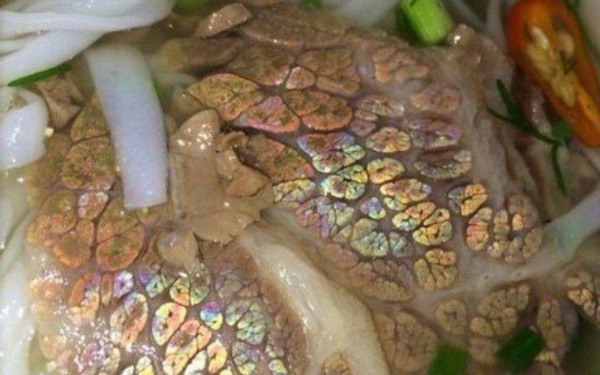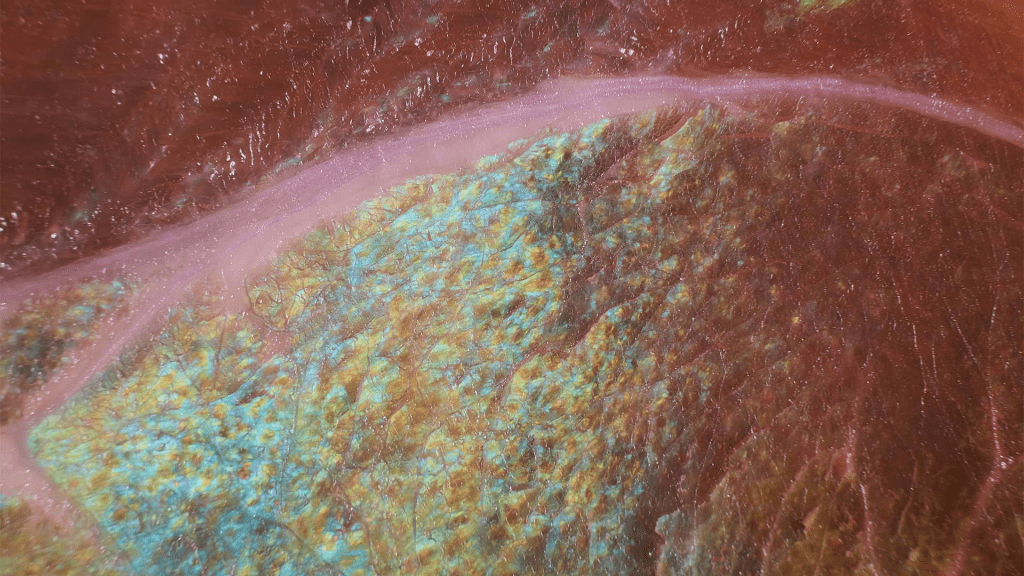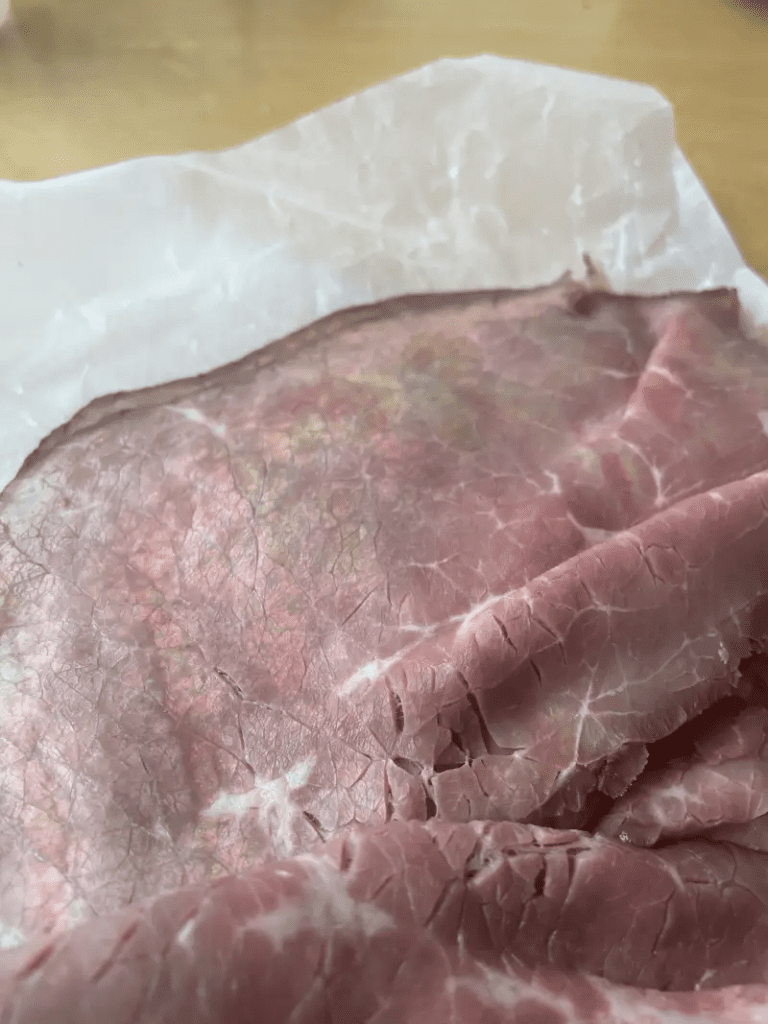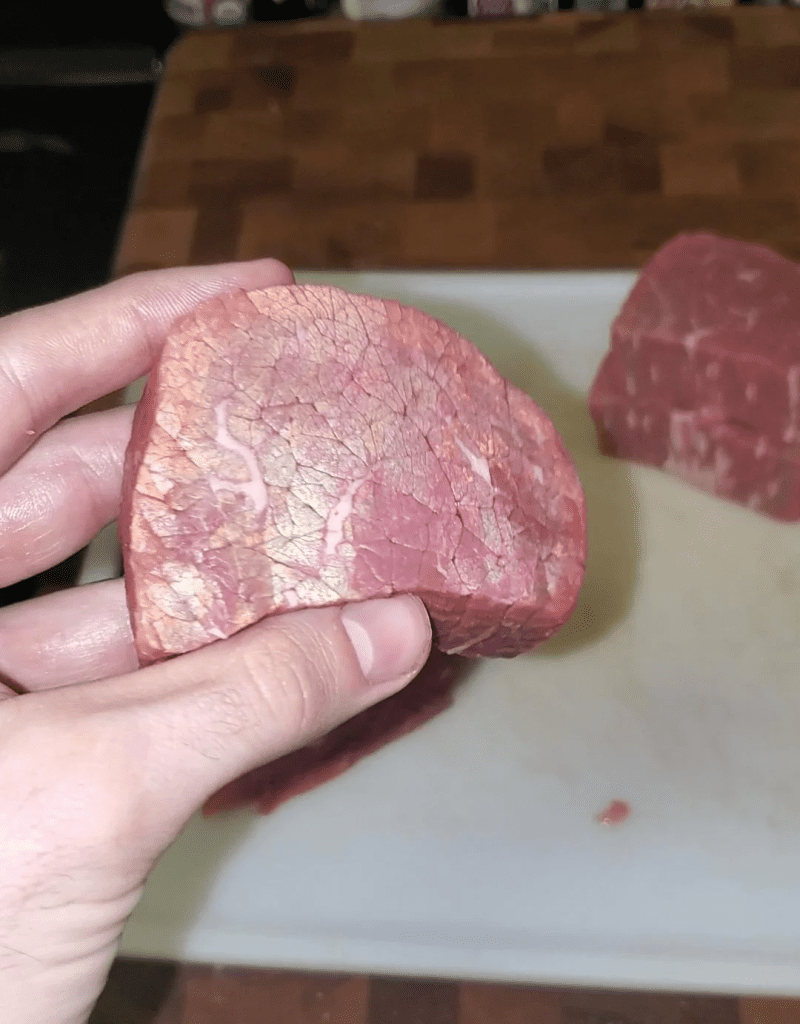Have you ever pulled a slice of roast beef from the fridge, only to find it gleaming with a rainbow of colors? It might look odd, and you may wonder if the meat has gone bad. Surprisingly, that shiny, colorful appearance isn’t a sign of spoilage—it’s actually a fascinating phenomenon rooted in science. In this article, we’ll dive into why some cuts of beef and other deli meats display these iridescent colors, whether it’s safe to eat, and how to tell if your meat is still fresh.
What Causes the Rainbow Effect on Meat?

The rainbow shimmer on deli meats, such as roast beef or pastrami, results from a scientific concept known as structural color. Unlike the natural pigments that give meat its typical red or brown color, structural color is created when light reflects off the physical structure of an object, diffracting into a spectrum of colors.
In beef, for instance, the microscopic arrangement of muscle fibers can cause light to hit the meat’s surface and split into various colors, much like how light refracts through a prism. This diffraction forms the multicolored sheen that you might see on thin slices of meat, especially under bright lighting.
Understanding Structural Color and Its Similarities in Nature
If you’ve ever marveled at the colors on a butterfly’s wings or a peacock feather, you’ve encountered structural color in nature. The vibrant blues, greens, and purples on these creatures are not due to pigment but are instead the result of light interacting with microstructures on the surface of their feathers or wings. This same effect happens on the surface of deli meats, where the light bounces off the smooth muscle fibers and reflects back in a range of colors.
The U.S. Department of Agriculture (USDA) has even addressed this phenomenon, reassuring consumers that these rainbows are perfectly normal and do not indicate spoiled meat.
Why Is the Iridescence More Common on Deli Meat?
Not all cuts of meat display this rainbow effect. The surface smoothness plays a major role in creating noticeable iridescence. When meat is sliced with commercial-grade deli slicers or butcher equipment, the blade creates a flat, smooth surface that’s ideal for diffracting light. In contrast, the rougher surfaces of meat sliced by hand at home tend to scatter light in various directions, making it less likely for iridescence to form.
Darker meats, like roast beef or pastrami, are also more prone to display this effect. The rich, dark color of these meats absorbs more light, making the colors that reflect back more visible against the darker background.
Is Iridescence a Sign That Meat Has Gone Bad?

Seeing a rainbow effect on your meat might raise concerns about its freshness, but rest assured, iridescence alone doesn’t mean the meat has spoiled. Structural color is purely a result of light interacting with the muscle fibers and does not impact the quality or safety of the meat.
However, if you notice a green tint accompanying the rainbow colors, it’s worth paying closer attention. While a slight green hue can sometimes appear as a result of processing, it can also indicate spoilage. Spoiled meat often has an unpleasant odor or a slimy, sticky texture. To be safe, always check the meat’s smell and texture, and make sure it’s within the sell-by date. If the meat smells sour, feels sticky, or has any other off characteristics, it’s best to discard it.
Why Do Some Meats Have a Green Tint?

A greenish tint on meat can result from various factors. According to the USDA, certain pigments in meat may change color due to heat or processing, which is typically harmless. However, green or gray spots could indicate the presence of mold or spoilage bacteria, which is cause for concern.
Before consuming meat with a greenish hue, take a moment to inspect it further. First, smell the meat—spoiled meat often has a sour or unpleasant odor. Next, check the texture. If the meat feels slimy or sticky, it’s best to err on the side of caution and avoid eating it. Always store meat at the appropriate temperature and consume it within the recommended timeframe to ensure freshness.
The Role of Light and Meat Quality
The lighting in your kitchen or grocery store can sometimes enhance the iridescent effect on meat. Bright, fluorescent lights can make the rainbow shimmer more pronounced, which might cause concern if you’re not used to seeing it. While structural color is common on processed deli meats, it can also occasionally appear on the surface of other meats, such as steak, particularly if the cut is smooth and flat.
Even though the shimmering rainbow is safe, meat that has been improperly stored or kept beyond its expiration date should always be treated with caution. If the meat looks and smells fine, you can enjoy it without worry. But if something seems off, it’s better to be safe than sorry.
Tips for Identifying Freshness in Deli Meats

The iridescent rainbow effect can be confusing, but there are easy ways to confirm the freshness of deli meats. Here’s what to look for when you’re unsure:
- Smell: Fresh deli meat should have a neutral, mild aroma. A sour or unusual smell is a sign that the meat has started to spoil.
- Touch: Check the texture of the meat. Fresh meat should feel firm and dry, not slimy or sticky.
- Color: While the rainbow effect itself is harmless, look for other discolorations. Green, gray, or brown patches can signal spoilage.
- Expiration Date: Always check the sell-by or expiration date on packaged deli meats, and consume them within the recommended timeframe.
If you’re still unsure, it’s best to err on the side of caution and discard any meat that doesn’t seem fresh.
Conclusion: Embracing the Science Behind Iridescent Meat
The next time you spot a rainbow on your deli meat, you’ll know it’s not a cause for alarm. This iridescence is simply a beautiful result of science at work—a reflection of light off the muscle fibers creating a colorful display. While it may look strange, it doesn’t mean the meat is spoiled. As long as the meat smells fresh, feels firm, and doesn’t show signs of green or gray patches, you can confidently enjoy your sandwich.
The world of food science is full of fascinating explanations for everyday occurrences. Understanding the reason behind the iridescent rainbow on meat helps demystify the process, allowing you to focus on enjoying your meals with peace of mind. So go ahead, make that roast beef sandwich and marvel at the simple wonders that science brings to our plates.


